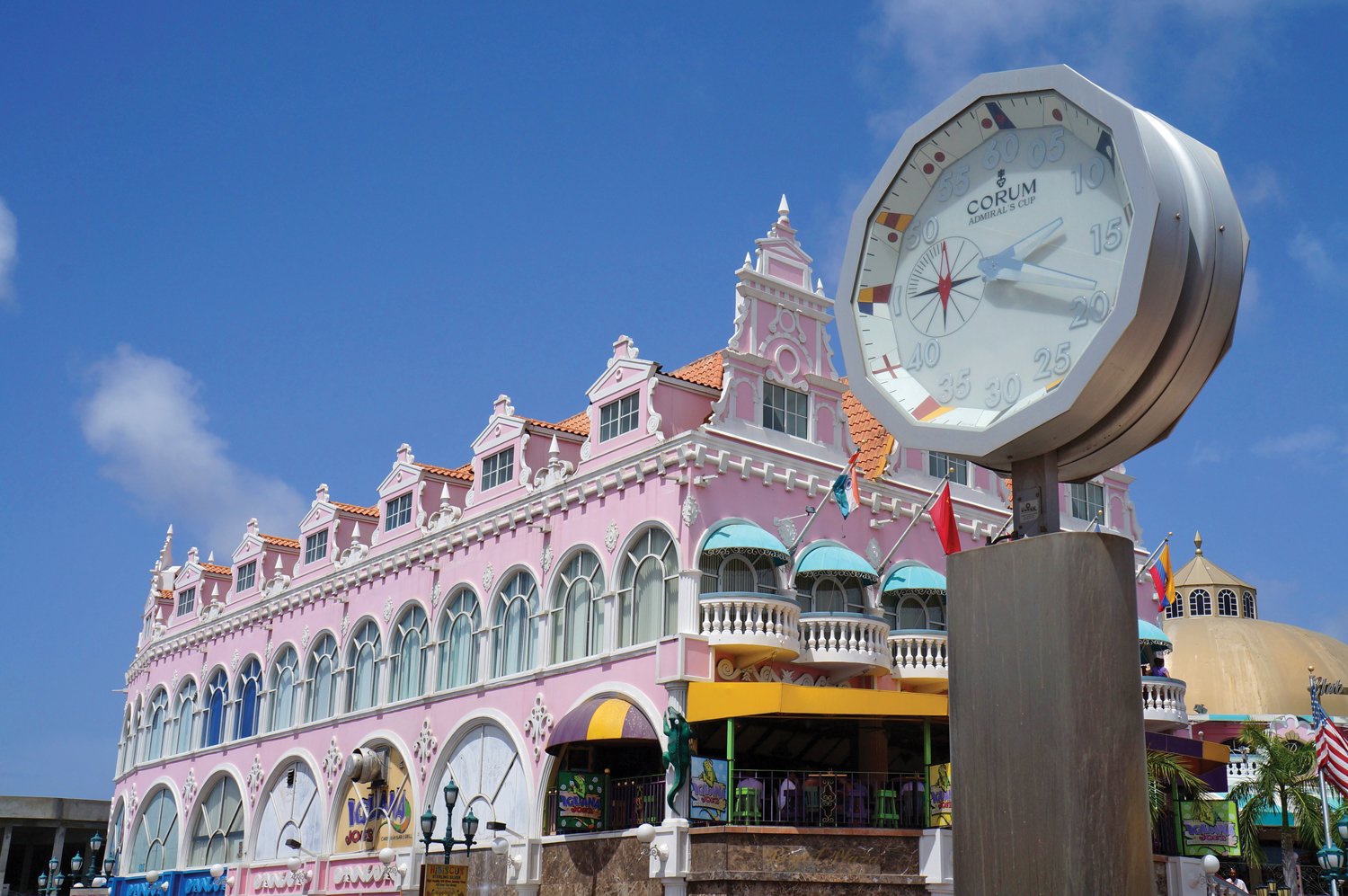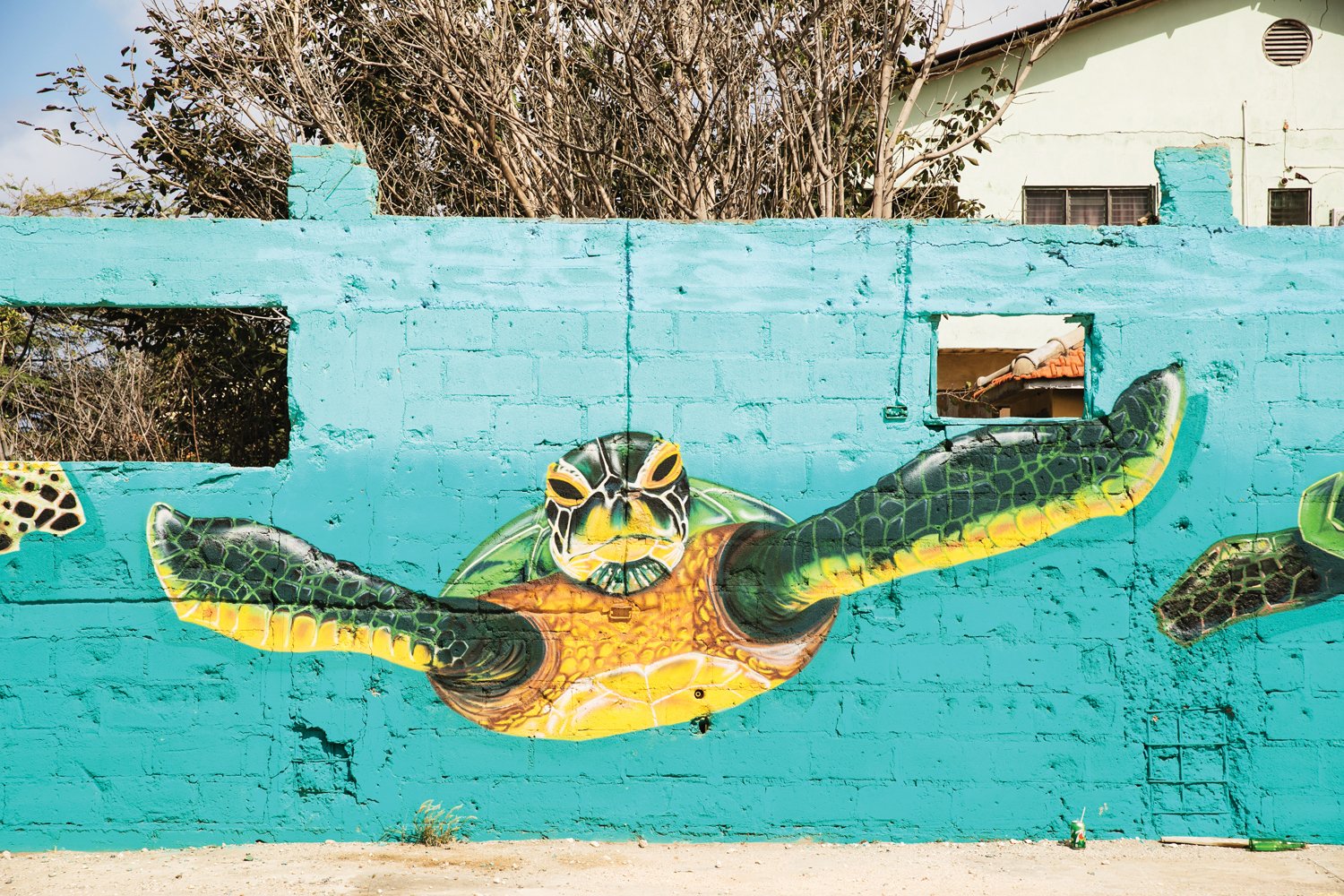Finding Yourself in Aruba
The first time I came to Aruba, I sat on the plane with a couple from Quebec. The wife did beautiful drawings on her iPad; the husband showed me videos of him windsurfing at Palm Beach. We agreed to meet the next day for drinks at Ling’s Bar & Restaurant, right across from the Coconut Inn where I was staying. They were amazed by Ling’s and its louche desert outpost vibes. Even after coming to Aruba for 23 years, they had never ventured away from the beachfront hotels.
— By Timothy Dugdale
Don’t make the same mistake. Aruba has three distinct areas – the beaches, the desert and the Atlantic Coast – each with their own charm, rendered by the curious history of the island. Unlike much of the Caribbean, Aruba never had plantation slavery. It’s a tropical desert, well-suited for all the cactus and goats you see away from the coasts. There was a gold rush but that went bust. There was an oil boom but that went bust. Now there’s tourism and Aruba is fully committed.
Indeed, there’s never been a better time to visit Aruba. On the one hand, the pandemic has given us all pause to think about our lives. Could it be that travel has more value as a mode of discovery rather than just escape? At same time, many talented people who left the island to cook in other places around the globe are coming back home to stake their claim in native Aruban cuisine. As a result, there is a greater demand for local food staples that deliver traditional flavors and cost much less than imported products. Santa Rosa, otherwise known as the Department of Agriculture, Livestock and Fishery, hosts a monthly farmer’s market. The department has also launched a ‘10,000 Plant’ project in which fruit trees are planted throughout Aruba with the goal of providing fresh grown fruits to residents and visitors alike. Even if you prefer to hole up in your timeshare, seeking out local meats, fish and vegetables will enhance not just your cooking experience but your appreciation for the unique ecosystem of Aruba.
Sustainability is the future of Aruba. Importing food, especially now with chronic supply chain interruptions, is expensive for residents and visitors. Likewise for fuel. Spend fifteen minutes in the lobby of any luxury hotel and you can’t help but wonder how much it costs to deliver such ferocious air conditioning. The answer is ‘plenty’. That’s why Aruba has installed a sentry of large wind turbines on the Atlantic Coast, just at the edge of Arikok National Park. Limestone cliffs at the edge of a vast moonscape of cactus- and scrub-sequester Boca Prins, arguably the most beautiful beach in all of Aruba. This is real nature, raw and dangerous. Savage undertows await the foolhardy. But the beach is a lovely place to let the sun give you a roasting while the wind blows you away. A flask of Palmera Rum, Aruba’s signature spirit, is a welcome companion.
It’s important to remember that Aruba is very much part of the Netherlands. And the island is closer to Latin America than it is the United States, both in culture and geopolitical strategy. If you visit the oil boom-bust town, San Nicolas, you can also feel uncertain vibrations of the black Caribbean and the pirate ship mentality of fossil fuel multinationals. Again, thanks to rise of locavore dining, San Nicolas is coming back to life and a trip from Noord to San Nicolas on the desert highway is a late afternoon road trip not to be missed.
The capital, Oranjestad, is a serious place run by serious people. It is also a bit of a time capsule. On quiet nights, as you walk along Caya Benito Croes, following the trolley tracks, it’s not hard to imagine yourself in Alan Furst’s thriller ‘Dark Voyage’, set in a 1940s European capital.
One evening, after a traditional fish soup and a couple of tumblers of rum at the Driftwood Restaurant, I rambled down the back streets of Oranjestad. Some of the houses are pressed right up against the sidewalk. As I walked by one, I noticed the door was wide open and a gent was rusticating in a BarcaLounger with a brew in his hand. Soccer was on the telly. He waved, gesturing me in. I waved back but kept walking. Now that’s hospitality.
That’s Aruba, open and welcome. Go the distance, beyond easy comforts and old habits. The rewards will surprise you.












